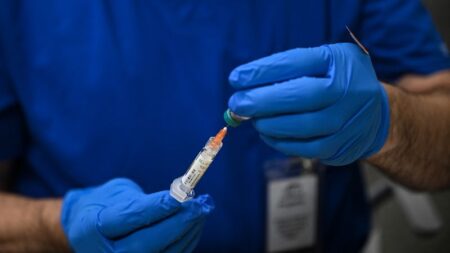In September, a personal journey began as I stood in front of my open refrigerator, grappling with hunger yet unable to decide what to eat. My dilemma wasn’t simply about satisfying my appetite; rather, I found myself entrenched in the anxieties that came with monitoring my glucose levels using a continuous glucose monitor (CGM). This wearable device, often associated with diabetes management, was newly introduced as a wellness tool, appealing to a broader audience eager to understand their health better. I was determined to master this technology, hoping to control my glucose readings through my food choices.
Having recently attached the CGM to my arm, I was aware that this small device would help me track the amount of sugar in my blood in real-time. Unlike those who manage diabetes, my motivation stemmed from curiosity to understand how variances in my diet could affect my glycemic responses. However, with my newfound data, I expected the process to shift my eating habits significantly. For instance, classic options like bananas or granola bars were instantly dismissed for their high sugar content, while the cheese I favored became a reliable staple due to its neutral impact on my glucose levels.
As I experimented with my diet, I began receiving feedback, and it wasn’t long before my husband pointed out that my choices were leading me toward a ketogenic lifestyle—minimizing carbohydrates while prioritizing proteins and fats. This shift nudged my weight down a few pounds initially, although I later realized this was more due to stress than any real change in habits. Medical experts note that the use of CGMs, whether for diabetes management or general wellness, should be approached cautiously. While CGMs significantly improve the quality of life for insulin-dependent diabetics by facilitating informed insulin dosage and reducing risky situations, my casual usage was more of an experiment than sensible lifestyle management.
Indeed, the technology behind CGMs has developed rapidly. Major companies like Dexcom and Abbott have launched biosensors for consumers without diabetes, making CGMs more accessible and affordable. These new products are meant to provide insights into the body’s glycemic response to meals, exercise, and overall lifestyle choices. For instance, Abbott’s Lingo was particularly emphasized as a way to engage individuals in their own wellness. The idea was clear: informing everyday citizens of how their bodies reacted to different inputs may help them make healthier lifestyle choices.
Initially, the device’s integration into my daily routine was seamless; setting it up was painless. Within an hour, the corresponding mobile app informed me of my glucose levels, and I felt both informed and a little overwhelmed. Despite being in the normal range, shortly after eating, I anxiously watched as the numbers fluctuated. Each spike sent me on a mental roller coaster—were these increases indicative of larger health issues? Dr. Dushay, a physician whose expertise includes obesity and diabetes, warned me not to obsess over potential implications. Her reminder that glucose excursions, even if they seem significant, could still be completely normal brought me some relief.
Over the course of several weeks, I became a fervent observer of what caused my blood sugar levels to rise. Despite my careful attention, I noticed that traditional healthy options like salads could unexpectedly lead to high glucose readings due to underlying sugars in dressings. Simultaneously, foods like pizza and wine, which I thought could be detrimental, surprisingly yielded a minimal impact on my glucose levels. With each piece of data I collected, I questioned the relationship between my food choices and my body’s unique reactions to them.
The varying responses to the same foods illustrated the complexity behind individual metabolism. My friend and CNN’s chief medical correspondent, Dr. Sanjay Gupta, shared his own experiences with CGMs, shedding light on how varied our reactions can be. Eating blueberries spiked his wife’s glucose but had no effect on his; conversely, rice caused his glucose levels to rise significantly while his wife’s remained stable.
After several weeks of monitoring, I recognized the need for a more constructive approach to using the CGM. I chose to ignore my glucose readings for a full week, instead focusing on recording what I ate and analyzing the outcomes later. This plan aimed to establish a more realistic baseline, allowing me to understand what my typical patterns of eating entailed without being skewed by real-time data. Repeating meals also became an interest of mine as I sought to discover patterns and fluctuations in my glucose responses.
Throughout this experiment, I unearthed useful insights about my habits, like a propensity to snack mindlessly. The CGM served as a gentle reminder for mindfulness, encouraging me to consider what I consumed rather than indulging without thought. As Dr. Spartano noted, the application of CGMs extends toward behavioral management, suggesting they might assist in preventing the future growth of diabetes.
In summary, my early apprehensions about the CGM faded as I embraced the learning curve associated with this insightful device. With advancements in technology, CGMs like Abbott’s Lingo have ushered a new frontier into health and wellness,












